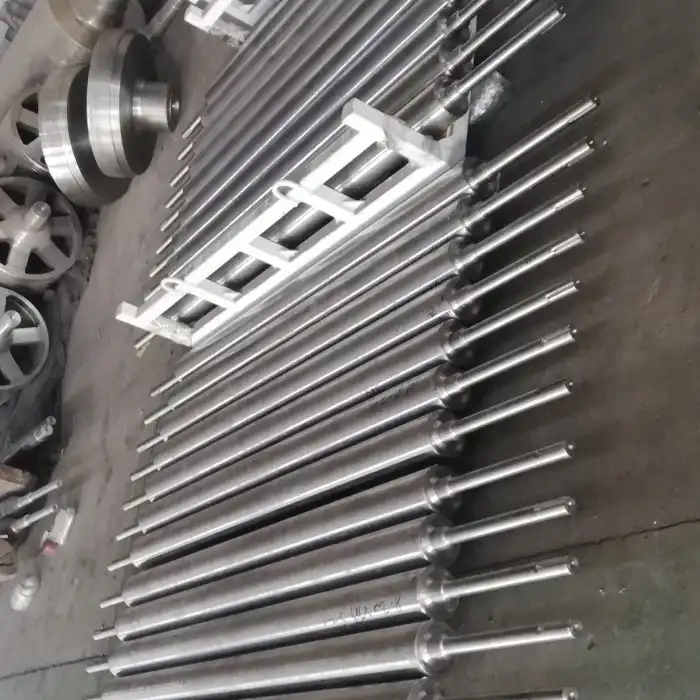Material Selection and Design Considerations
Choosing the Right Alloy Composition
Selecting the appropriate alloy for furnace rolls is paramount in ensuring their longevity and operational efficiency. High-temperature alloys, such as heat-resistant stainless steels, nickel-based superalloys, or advanced ceramics, are often utilized in furnace roll manufacturing due to their superior thermal stability, mechanical properties, and resistance to oxidation. The specific alloy choice depends on various operational factors like the operating temperature, the atmosphere within the furnace, and the nature of the materials being processed.
Heat-resistant stainless steels, such as austenitic or ferritic grades, offer a good balance of high-temperature performance, corrosion resistance, and mechanical strength. These alloys are ideal for medium-to-high temperature applications where oxidation resistance is critical, but the temperatures do not exceed the material’s limit. Stainless steel is commonly used in environments that involve mild to moderate thermal cycling, such as in heat treatment or drying furnaces.
Optimizing Roll Design for Thermal Stress Resistance
The design of furnace rolls is a critical factor in enhancing their resistance to thermal stresses, ensuring they perform optimally and last longer in high-temperature environments. Thermal stress arises from rapid temperature fluctuations and the temperature gradients that develop within the roll during heating and cooling cycles. To mitigate these stresses, furnace roll designs must be carefully optimized to distribute heat more evenly and reduce the risk of thermal fatigue or cracking.
One of the most effective design strategies involves incorporating internal cooling channels into the roll. These channels allow for the controlled circulation of cooling fluids, such as water or air, through the roll’s core. By maintaining a more uniform temperature distribution within the roll, internal cooling channels reduce the thermal gradients that can lead to internal stresses. Cooling channels also help to dissipate excess heat that accumulates within the roll during operation, further enhancing its overall thermal stability.
Surface Treatments and Coatings
Applying advanced surface treatments or protective coatings is a proven method to improve the wear, oxidation, and corrosion resistance of furnace rolls, thereby extending their operational life. These treatments serve as a barrier against harsh environmental conditions such as high temperatures, abrasive particles, and chemical reactions that are common in furnace environments. The appropriate surface treatment or coating can also reduce the need for frequent maintenance and replacements, resulting in better cost-effectiveness over time.
One of the most commonly used techniques for enhancing the thermal protection of furnace rolls is thermal spraying. Thermal spraying involves the application of a molten or semi-molten material onto the surface of the roll, which then solidifies into a dense, protective coating. Materials used in thermal spraying can include ceramics, metals, and composite coatings, depending on the specific environmental requirements of the furnace. For example, a coating of aluminum oxide or yttria-stabilized zirconia can significantly increase the roll’s resistance to thermal shock, oxidation, and high-temperature wear. Thermal spraying is particularly effective in furnaces where frequent exposure to high heat gradients and abrasive materials occurs.
Maintenance and Inspection Protocols
Implementing Regular Inspection Schedules
Establishing a routine inspection program is essential for identifying potential issues before they lead to catastrophic failure. Visual inspections, non-destructive testing methods, and dimensional checks should be conducted at regular intervals to assess the condition of furnace rolls and detect early signs of wear, cracking, or deformation.
Proactive Maintenance Strategies
Adopting a proactive maintenance approach can significantly extend the lifespan of furnace rolls. This includes regular cleaning to remove scale and deposits, lubrication of bearings and support systems, and timely replacement of worn components. Implementing a computerized maintenance management system (CMMS) can help streamline these processes and ensure timely interventions.
Advanced Monitoring and Diagnostics
Utilizing advanced monitoring technologies such as thermal imaging, vibration analysis, and real-time data logging can provide valuable insights into the performance and condition of furnace rolls. These tools enable operators to detect anomalies early and make informed decisions regarding maintenance or replacement schedules.
Operational Best Practices and Process Optimization
Temperature Control and Thermal Management
Maintaining precise temperature control within the furnace is crucial for prolonging the life of furnace rolls. Implementing advanced temperature monitoring systems, optimizing heating and cooling cycles, and ensuring uniform heat distribution can minimize thermal shock and reduce the risk of roll failure due to excessive thermal stress.
Load Distribution and Material Handling
Proper load distribution across the furnace rolls is essential for preventing localized wear and deformation. Optimizing material handling processes, ensuring even loading, and implementing automated systems for material transfer can help distribute stress more evenly and reduce the risk of premature roll failure.
Atmosphere Control and Corrosion Prevention
Controlling the furnace atmosphere is critical for minimizing corrosion and oxidation of furnace rolls. Implementing inert gas purging, maintaining proper gas composition, and utilizing protective atmospheres can significantly reduce the rate of material degradation and extend the operational life of the rolls.
In conclusion, extending the lifespan of your furnace rolls requires a multifaceted approach that combines careful material selection, diligent maintenance practices, and optimized operational procedures. By implementing these strategies, industries can significantly enhance the durability and performance of their furnace rolls, leading to improved productivity and reduced downtime. For more information on high-quality furnace rolls and expert guidance on maximizing their lifespan, please contact us at info@welongpost.com.




